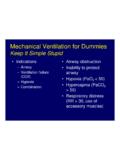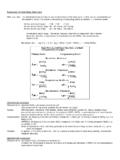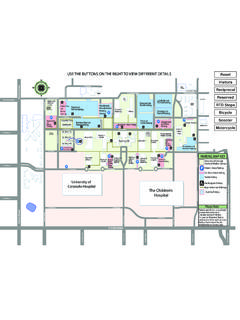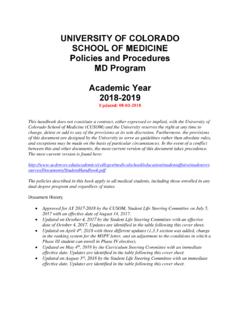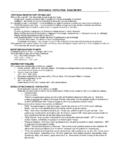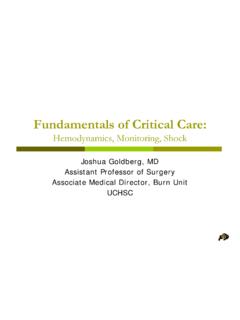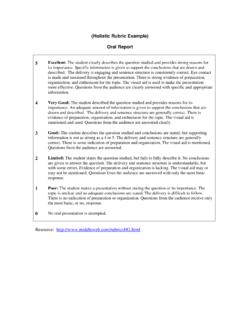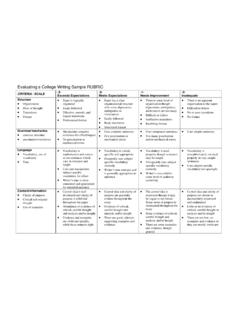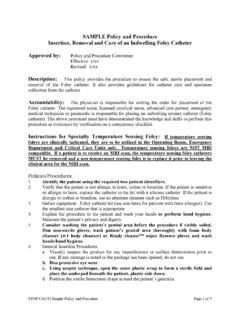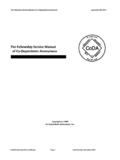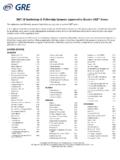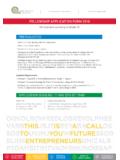Transcription of Examination Skills of the Musculoskeletal System
1 Examination Skills of the Musculoskeletal SystemSelf-study ProgramAuthor:Robert Sallis, MD, FAAFP, FACSMD epartment of Family MedicineKaiser Permanente Medical CenterFontana, California 2 Examination Skills of the Musculoskeletal SystemTable of ContentsDisclaimer .. 3 Author Disclosure .. 3 About the Author .. 3 Contributors.. 4 CME Credit Information .. 4 Objectives .. 5 Introduction .. 6 Shoulder and Neck Evaluation .. 7 Shoulder and Neck Exam Landmarks .. 16 Shoulder and Neck Exam Essentials .. 17 Elbow Evaluation .. 19 Elbow Exam Landmarks .. 26 Elbow Exam Essentials .. 27 Wrist and Hand Evaluation.. 29 Wrist and Hand Exam Landmarks.. 37 Wrist and Hand Exam Essentials.
2 38 Lower Back Evaluation .. 39 Lower Back Exam Landmarks .. 45 Lower Back Exam Essentials .. 46 Hip Evaluation .. 47 Hip Exam Landmarks .. 54 Hip Exam Essentials.. 55 Knee Evaluation .. 57 Knee Exam Landmarks .. 66 Knee Exam Essentials .. 67 Ankle Evaluation .. 69 Ankle Exam Landmarks .. 76 Ankle Exam Essentials .. 77 References .. 79 Acknowledgements .. 79 Self-assessment Questions .. 79 DISCLAIMERThe material presented in this program is being made available by the American Academy of Family Physicians for educational purposes only. This material is not intended to represent the only, nor necessarily best, methods or procedures appropriate for the medical situations discussed, but rather is intended to present an approach, view, statement or opinion of the faculty that may be helpful to others who face similar may choose to check specific details such as drug doses and contraindications, etc.
3 , in standard sources prior to clinical application. Every effort has been made to assure theaccuracy of the data presented in this program should be used as an educational tool to help learn the procedures involved inthe Examination of the Musculoskeletal System . In addition to this program, attendance at a for-mal course related to these Skills and supervised clinical experience is highly DISCLOSUREThe AAFP has selected and provides funding for all authors of this syllabus. According to AAFP policy, all relationships between speakers and proprietary entities will be following author has returned a disclosure form indicating the following:Robert Sallis, Member, Sports Medicine Review Board, Gatorade Sports Science InstituteThe above author has declared that the content of his presentation will not includediscussion of unapproved or investigational uses of products or THE AUTHORR obert Sallis, MD, FAAFP, FACSM serves as Co-director of the Sports Medicine Fellowship at Kaiser Permanente Medical Center in Fontana, Calif.
4 , and as head Team Physician forPomona College. He is an Assistant Clinical Professor of Family Medicine at the UCR/UCLAB iomedical Sciences Program in Riverside, Calif., and is a Fellow of both the AmericanAcademy of Family Physicians and the American College of Sports Medicine. He currentlyserves as Vice President of the American College of Sports Medicine, and is the Editor-in-Chiefof Current Sports Medicine Reportsand Associate Editor-in-Chief of Medicine & Science inSports & Skills of the Musculoskeletal System 3 CONTRIBUTORSA uthor: Robert E. Sallis, , FAAFP,Co-director of Sports Medicine Fellowship, Kaiser PermanenteMedical Center, Fontana, California; Assistant Clinical Professor of Family Medicine;UCR/UCLA Biomedical Sciences Program.
5 Team Physician, Pomona College, RanchoCucamonga, CaliforniaAAFP Project Manager: Sandy Shelton, CME Production Manager, Division of Continuing Medical EducationAAFP Staff Editor: Cara Sloan, Senior CME Projects Editor, Division of Continuing Medical EducationAAFP CME Projects Coordinator: Nina Carnoali,Senior CME Program Coordinator, Division of Continuing Medical EducationAAFP Editorial Assistant: Julie McNamara,Manager, CME Marketing, Division of Continuing Medical EducationIllustrator:Stephen Beebe,Kaiser Permanente, Los Angeles, CaliforniaVideographer:Rick Tilley,Kaiser Permanente, Los Angeles, CaliforniaCME CREDIT INFORMATIONSee insert for CME credit information and credit members wishing to obtain CME credit should complete and return the enclosed post-test to the CME Production Department, American Academy of Family Physicians, 11400 Tomahawk Creek Parkway, Leawood, Kansas 66211-2672.
6 These credits will automatically beadded to your continuing medical education who are nonmembers should complete the post-test and return it to the CMEP roduction Department, American Academy of Family Physicians, 11400 Tomahawk CreekParkway, Leawood, Kansas 66211-2672. A letter documenting program completion will be sentautomatically upon receipt of the post-test. 4 Examination Skills of the Musculoskeletal SystemOBJECTIVESUpon completion of this program, you should be able to:1. State important history questions used to evaluate patients presenting with problems involving the shoulder, neck, elbow, wrist, hand, back, knee, foot and Locate important anatomic landmarks in each of these areas and understand their clinical Perform essential exam maneuvers needed to effectively diagnose problems involving the shoulder, neck, elbow, wrist, hand, back, knee, foot and Skills of the Musculoskeletal System 5 INTRODUCTIONThis video presentation is designed to give primary care physicians a practical review of essentialexamination techniques necessary to diagnose patients presenting with common musculoskeletalcomplaints.
7 A systematic approach is presented, which includes a focused history followed by athorough physical exam. The techniques reviewed in this presentation should enable the primarycare physician to make confident evaluations and diagnoses. This self-study program is divided into 7 modules:1. Neck/shoulder2. Elbow3. Wrist/hand4. Lower back5. Hip6. Knee 7. AnkleTo maximize learning, it is advised you watch the video presentation with a partner while carefullyreviewing this syllabus material. At the end of each module, locate each of the anatomic landmarkson your partner (it may be helpful to mark them with an erasable pen). Next, review the list of exam essentials for each module and practice them on your partner.
8 You may consider viewing the companion Joint Injection and Aspiration self-study program aswell. Together, these educational offerings can help the practicing family physician becomemore confident with diagnosing and managing patients with common Musculoskeletal you begin this module, it may be helpful to review terms that will be used to describevarious exam maneuvers and findings:1. Valgus describes the position of a joint when the distal segment is angled away from the midline of the body (eg, genu valgum is the knock-kneed position).2. Varus the opposite of valgus, in which the distal segment is angled toward the midline ofthe body (eg, genu varum is the bow-legged position).
9 3. Abduction refers to motion away from the midline of the Adduction refers to motion toward the midline of the Proximal means closer to any point of reference; opposed to Distal means further from any point of reference; opposed to Volar the palmar surface of the Dorsal the posterior surface (or back) of the hand. 6 Examination Skills of the Musculoskeletal SystemShoulder and NeckEvaluationShoulder and Neck Exam LandmarksShoulder and Neck Exam EssentialsExamination Skills of the Musculoskeletal System 7 8 Examination Skills of the Musculoskeletal SystemSHOULDER AND NECK EVALUATIONHISTORYA thorough history is critical in evaluating patients with shoulder pain.
10 Important questionsinclude:What was the mechanism of injury or overuse?It is important to determine if this is a chronic injury related to overuse, or an acute injury relatedto trauma. Specifically ask what activities cause the pain. Most commonly, pain from an overuseinjury will be related to repetitive overhead activity and will tend to worsen with activity andimprove with rest. Keep in mind also that pain in the shoulder can radiate from a variety ofsources, including the chest, abdomen and the cervical there symptoms of instability?Ask the patient if they have ever had a dislocated shoulder. This injury will generally result inloosening of the static restraints of the shoulder (capsule and glenohumeral ligaments) andchronic problems of shoulder instability.
